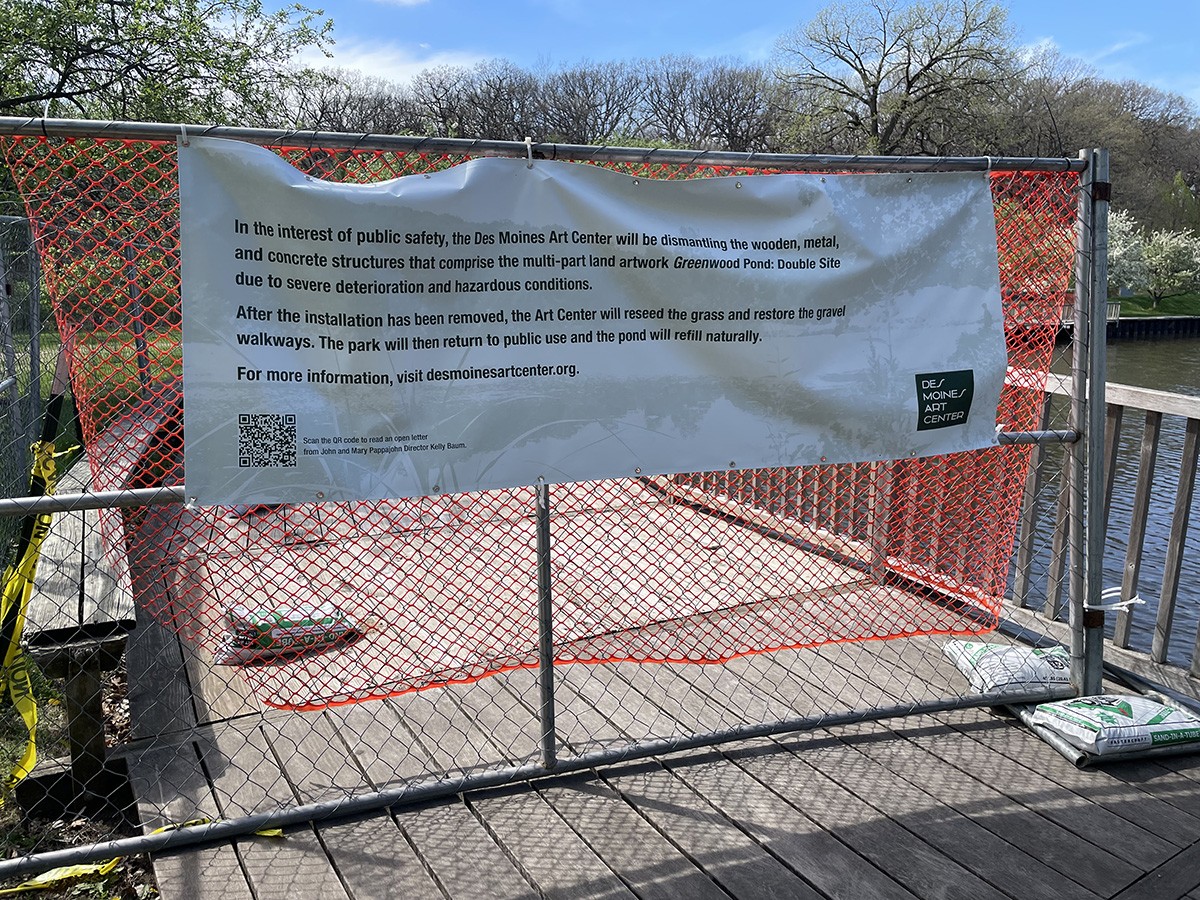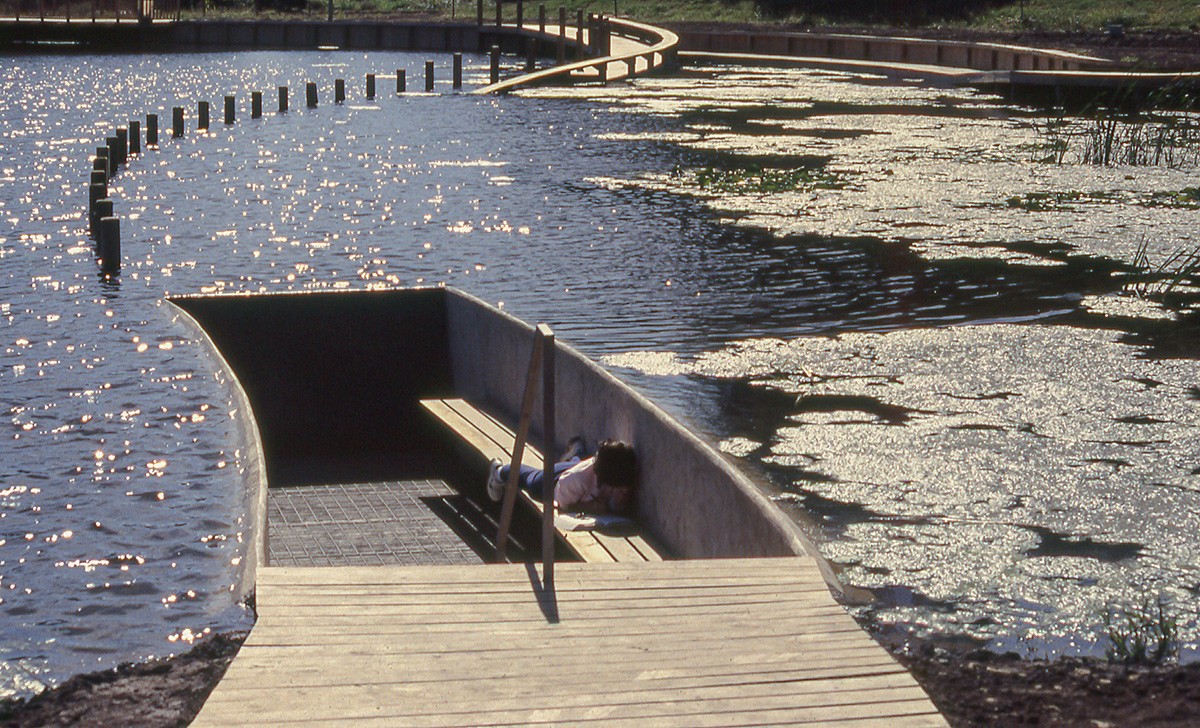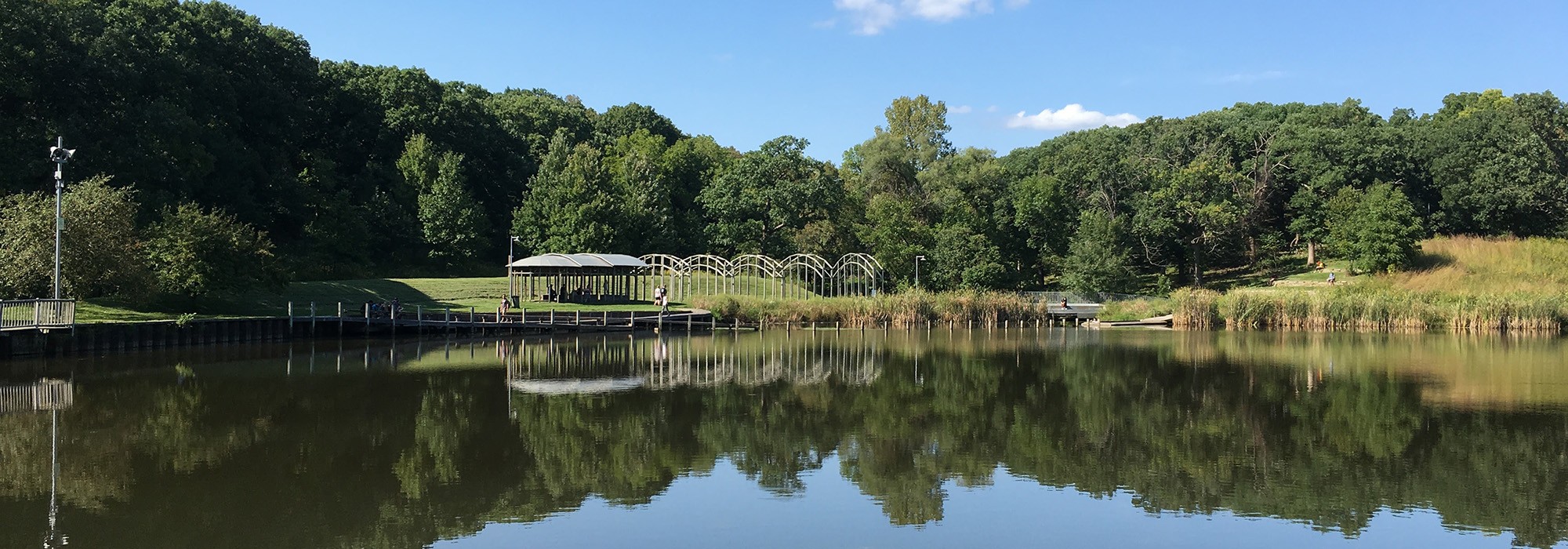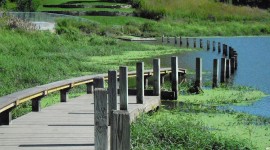Preliminary Injunction granted for “Greenwood Pond: Double Site”
On Friday, May 3, exactly one month after the Des Moines Art Center announced plans to tear down land art movement leader Mary Miss’ installation Greenwood Pond: Double Site, a federal judge issued a preliminary injunction prohibiting demolition. The Cultural Landscape Foundation (TCLF) first exposed the Art Center's plan to destroy the work on January 16, 2024 and is leading the national advocacy campaign on its behalf. The ruling sets the stage for a broader trial about the artwork’s future. The artist filed suit against the Art Center, which claims the installation is too expensive to restore, for violation of the Visual Artists Rights Act (VARA) and breach of its 1994 contract with Miss. Since the injunction is “preliminary” the litigation is not concluded and another trial date will be set.
In a nineteen-page decision following a hearing held on April 17, Judge Stephen Locher of the U.S. District Court for the Southern District of Iowa ruled: “The Art Center cannot demolish the artwork without Miss’s consent (which she will not grant) because the Art Center promised in a contract not to do so. The Court therefore must GRANT Miss’s Motion for Preliminary Injunction insofar as it seeks to prevent the Art Center from tearing down the artwork.” The Judge also concluded that Miss had established that Greenwood Pond: Double Site is a “work of recognized stature” [under VARA]. Miss is represented by Ben Arato with the Des Moines-based firm Wandro, Kanne & Lalor. The artist is also represented by Dave Bright with the Iowa Volunteer Lawyers for the Arts.

However, the judge also ruled he cannot “force the Art Center to repair or restore the artwork to its original condition because the same contract gives the Art Center unilateral discretion to decide whether to undertake repairs or restoration.” Judge Locher did side with the Art Center on another matter. Even though Greenwood Pond: Double Site is called an “environmental sculpture” in the Art Center’s 1994 contact with the artist, the judge agreed with the Art Center that the artwork is not protected by VARA (which applies to a “painting, drawing, print, or sculpture”), because he wrote, it “is not really a sculpture. Instead, it blends the natural landscape with wooden features like a boardwalk, walking path, warming hut (which resembles the interior framing of a building) and other structures. It is a stretch even to refer to these structures as sculptures in the metaphorical sense; they are surely not sculptures in the literal sense.” He cited as justification testimony by two of Miss’ expert witnesses, art scholar Susanneh Bieber and landscape architect Bambi Yost, who said the work was not a “traditional sculpture,” and dismissed Miss' observation: "I think what is considered a sculpture, the definition has been pretty expanded in the 20th century.”

Charles A. Birnbaum, TCLF’s President and CEO, said despite the judge’s conclusion “we expect that expert testimony at trial—if it gets to that point—will establish that land art is sculpture (e.g., Robert Smithson’s Spiral Jetty) and, especially that this land art, Greenwood Pond: Double Site, was accessioned into DMAC’s permanent collection as a sculpture.” As noted above, per the 1994 contract, it was accessioned as a work of “environmental sculpture.”
A statement on the Art Center’s website following the ruling noted: “We are exploring our options as to how to resolve what has become a court ordered stalemate. In the meantime, we will retain the existing fencing around the dangerous sections of the site and will engage the City of Des Moines to address public safety in Greenwood Park.” The latter part of that statement is probably a reference to the Art Center’s operating agreement with the city that allows the artwork to be sited in a city park; it states: “The CITY may require the ART CENTER to repair or remove a sculpture if the ART CENTER has failed to either maintain the structural integrity of a sculpture or to correct any unsafe condition within a sculpture.” It would appear the Art Center may be trying to get the city to call for the artwork’s removal, something the city has thus far declined to do. Notably, the statement makes no mention of consulting with the artist.

It bears noting that the operating agreement with the city also states: “Each party shall, at its sole expense and responsibility, perform necessary maintenance to assure that the designated portion of the sculptures for which it is responsible shall not become damaged, deteriorated or unsafe.” Arguably, the Art Center has failed to abide by this contract, too.
The Art Center’s decades of ill-maintenance of Greenwood Pond: Double Site, its disastrous unilateral decision to destroy the artwork, and its refusal to consult with the artist on alternatives to demolition have resulted in sustained negative national press coverage and damaged the reputations of the institution, its Board of Trustees, and Director Kelly Baum. Therefore, it’s unclear why city officials would willingly and voluntarily mire themselves in this controversy.










